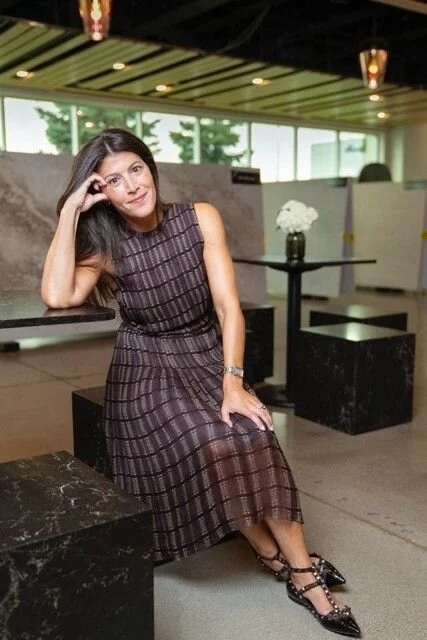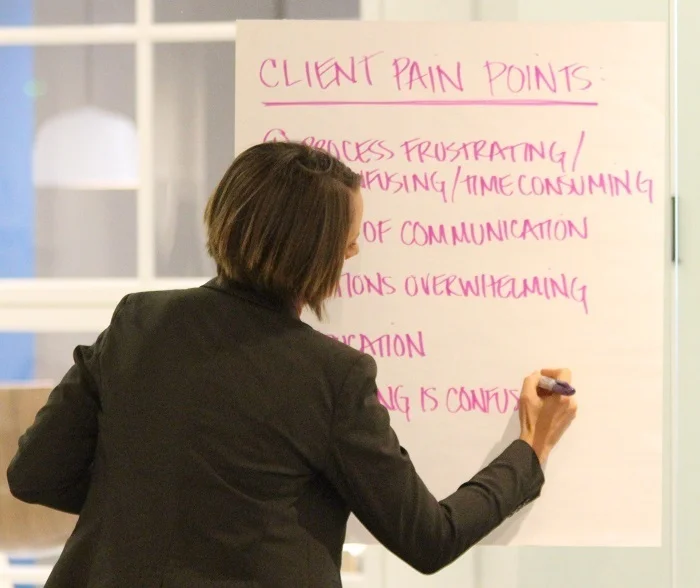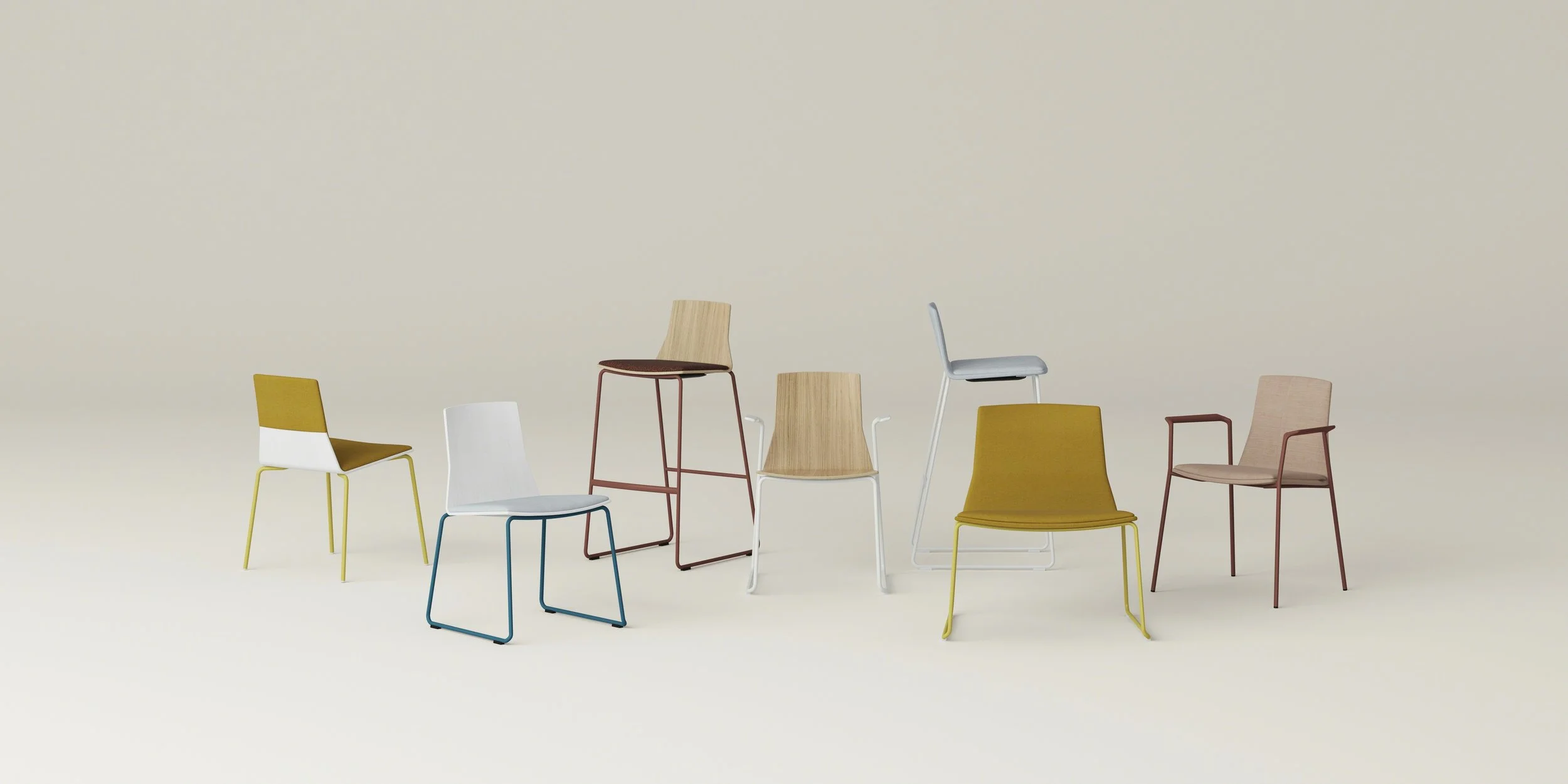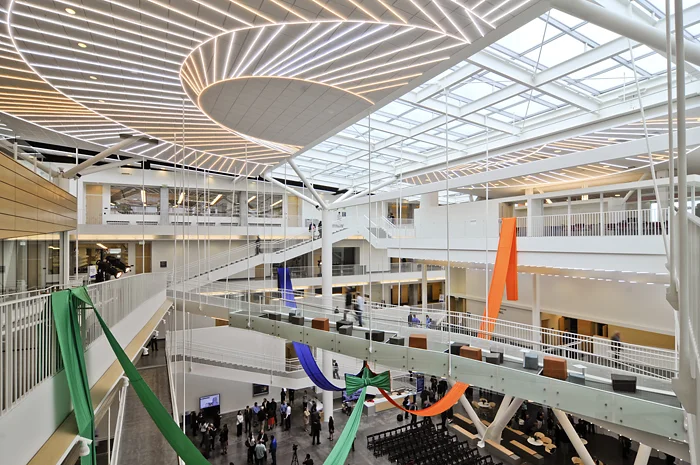A happy and healthy workplace is a productive workplace, according to engineers, architects and scientists who are using academic research to build better office spaces.
Now is the time to bring humanity back to the workplace
With a renewed focus on how our working environment can affect our health, the time has come to rethink the workplace with humans at its heart.
Building a culture of creativity that unites the physical and digital workplaces
Until now, space and technology have been planned and developed by completely different teams with contrasting objectives. But this approach has often led to a disconnect in how the two interact, and the behaviour they stimulate amongst employees. Instead, organisations need to nurture a balanced ecosystem, involving technology that is both mobile and integrated into the physical environment, as well as spaces designed for individual “me” work and “we” group work.
White Paper: Measure What Matters Six shi s in the way workplaces are being planned for people
Over the past few decades, the old adage has gained relevance in the realms of corporate real estate, as organizations striving for a better return on investment paid increasing attention to the metrics of asset management.
11 Questions to Ask Yourself Before Designing or Redesigning Your Workplace
This list sums up all the often-overlooked questions that are important to ask in order to effectively design an office whether you are ready to start a business, moving location or redesigning your existing workspace.
CBRE Furniture Forum Seeks to Solve Client Pain Points with Explorations in Multiple Cities
What started as an industry-wide discussion in one market has extended, and the conversation is getting deeper and increasingly thought-provoking. But how do you drive change in an entire industry? One conversation at a time.
The digital workplace: 8 steps to greater agility, productivity
What is the digital workplace? It is a business strategy aimed at boosting employee engagement and agility through consumerization of the work environment.
Future office and changing business of work debated at Workplace Trends
Those working within the built environment are already in the change business, was the view of Neil Usher in his presentation at the Workplace Trends Conference which was held in London this week. This was apt, as the changing business of work’ was the theme of the conference. It’s a pretty common topic these days of course but a strong line up of speakers ensured some interesting discussions; which included the rise of the gig economy, the variety of ways people from different cultures perceive workplace design and predictions on the workplaces of the future. On the current design and fit out of the office, Usher was clear; that creating a fantastic workplace is independent of culture, location, the work style you want to create and the sector in which you’re working. His other mantra was that you can still work in an awful workplace with great technology, but not the other way around, which is why there is no excuse for not getting your technology right.
On this point came a pertinent question posed by Paul Miller, CEO and Founder of the Digital Workplace Group (DWG) and co-author of The Digital Renaissance of Work: Delivering digital workplaces fit for the future: “Would CEO’s and business leaders who admit they are digitally illiterate sustain a business career if they were similarly unable to read?’ How effective can they be, he asked, if they don’t understand the fundamental impact new technology is making on the workplace?
Create with Custom Color
We live in a culture of customization. We crave the unique and desire the opportunity to create something just for us.
This is especially evident in today’s workplaces, where clients work closely with architects and designers to create a space that is tailored to the organization, its culture, customers and mission.
How workation retreats are blending work and relaxation
Settling in with a laptop beneath a shady tree, connecting with colleagues around a fire pit, or sampling a local craft beer at the bar…this is work, but not in the traditional sense.
Office Design Tips to Attract and Retain Talent
Work should never be a chore, which is why to keep your staff engaged, you need to set up your workplace as a destination that they want to work from, not somewhere that they have to be.
How Small Workplace Changes Can Make a Big Impact on Your Employees' Productivity
The Language of Space
Given the expressive potential of buildings and our human tendency to associate ideas and feelings with the settings we encounter and inhabit, designers must consider what combination of volumes and planes, colors and textures, will elicit the desired response.
Workplace Design and Conditions Affect Worker Performance
Companies with good environmental conditions in the workplace and flexible working are more productive, innovative and profitable.
You think offices are digital now? Just wait.
Soon, your work space might exist all in your head. That’s because computer-enabled devices will be able to project virtual, yet fully functional, representations of present-day physical office tools — a monitor, keyboard, mouse, phone, stapler, calculator, pens, paper and file cabinets — within your field of view.
Workplace trends inspire the future of life sciences real estate
From meditation gardens to shared reading nooks, unique amenities can attract top life sciences talent.
Rethinking An Old Project Room to Support Creativity
Steelcase designers have put together three steps for turning an existing project space into a place where creativity can thrive.
Before changing jobs to avoid a toxic coworker, try changing desks
At the heart of this strategy is the “Allen curve,” named for MIT researcher Thomas J. Allen’s observation that the closer people sit, the more they communicate, both in person and through other media. Allen found that people are four times more likely to communicate with a colleague who sits six feet away than with one who sits 60 feet away. Coworkers who sit 150 feet or more away from each other communicate as often as colleagues in separate cities.
4 Compelling Reasons Your Company Should Host Office Tours
Whether you conduct business as a brick and mortar store or are online e-commerce business - the physical place that your associates work in is a great contributor to how they treat your customers.
Is it time for firms to merge real estate and human resources teams?
In the vast majority of companies there’s always been a pretty clear distinction between Human Resources and Corporate Real Estate: One looks after people and the other deals with buildings.
























